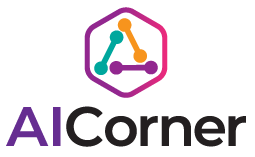In the continually shifting technological space of artificial intelligence and computing, a novel structure has been developing through some very challenging paths with ideas that are gleaned from our most intricate as well as efficient data processor known to us humans — The Brain. This method, known as neuromorphic computing, intends to restructure computer architectures so they emulate the neural networks of biological brains. In conclusion, as we will continue expanding the capabilities of AI, neuromorphic computing opens an interesting path to improve upon existing systems.
Understanding Neuromorphic Computing
Neuromorphic Computing is a very interdisciplinary field that encompasses the various areas of computer science, neuroscience, and electrical engineering. This essentially tries to mimic the structure and performance of biological neural networks in artificial systems. By contrast with conventional von Neumann computer architectures, which strictly compartmentalize memory and processing units–neuromorphic systems blend these elements in a manner analogous to the distributed or parallel way that information is processed across nervous tissue.
Unique mechanisms of neuromorphic computing include:
Parallel Processing: Like in the brain, neuromorphic systems can carry out multiple operations at once, significantly increasing computational performance.
Developed Based on Brain-inspired: Neuromorphic chips, mimicking the low-energy information processing mechanism in the brain compared with general computing technologies.
The usual methods used here are: 1) Adaptive Learning, i.e. These systems change themselves so they vary in how and what input do behind their function (Brain learns this way too :))),
The distributed nature of neuromorphic architectures accounts for much of their fault tolerance, in the same way that our brains can continue to function even after losing many individual neurons.
The Building Blocks: Artificial Neurons and Synapses
Artificial neurons and synapses, the building blocks of neuromorphic computing mimic their biological counterparts. These are usually created using special hardware materials:
Artificial Neurons — electronic circuits that mirror the functionality of biological neurons. Incoming signals are integrated and output spikes generated when a threshold is met.
Artificial Synapses: These units mimic the process of synaptic plasticity in our brain, changing their weight (or strength) based on signal frequency and timing to model connections between neurons.
Several shop implementations such as analog VLSI circuits, memristors and spintronic devices are under investigation, to realize these components. They all have their own distinct scalability, energy efficiency and computational capabilities.
Applications and Potential Impact
Many potential uses of neuromorphic computing;!
Neuro-mimetic computing — nicer yet harder AI, especially in the domains of pattern recognition like computer vision and sensory processing(generalization), NLP (understanding text/speech semantics), or decision making under guesswork.
Robotics: Neuromorphic computing could result in more sophisticated and responsive robotic systems by providing real-time sensing capabilities, processing reactions, and adaptive behavior.
Low-power neuromorphic chips would make powerful AI in edge devices possible, thereby enhancing the smartness of IoT networks — the Internet of Things (IoT).
Brain-Computer Interfaces: As we uncover a better understanding of neural information processing, neuromorphic systems may enable interfaces between the human brain and external devices that are more intuitive (natural) or significantly more efficient.
Brain Studies: As such, neuromorphic systems could be valuable instruments for neuroscientists to test how brain processes function and create new prospects based on neurological disorders.
Challenges and Future Directions
Despite its enormous promise, however, neuromorphic computing faces several fundamental challenges:
Scalability: It is incredibly challenging to create large scale neuromorphic systems with comparable complexity as the human brain (which has an estimated 86 billion neurons and around 100 trillion synapses).
Software. Training a neuromorphic system is fundamentally different from training one as its mode of operation deviates so much from that of conventional computers and developing best practices for this type air air-forced programming universe has been an active research thrust.
Standardization: With the development of neuromorphic chips, it will be important to define common standards and benchmarks for comparing various architectures and judge how well we are doing defaultCenter.]
Integration with existing technologies: Integration of neuromorphic systems into conventional computing infrastructure is a crucial challenge that must be addressed to allow practical access and deployment.
Conclusion
Neuromorphic computing is a step change for AI and computing Taking a leaf out of the highly efficient yet incredibly adaptable human brain, these systems will solve many shortcomings that exist in today’s AI regime — most prominently energy efficiency and learning potential.
Research into neuromorphic computing holds promise for more intricate AI, running faster and with greater energy efficiency in a bevy of applications. Despite the challenges of creating a complete model, advances in neuromorphic platforms lie at the intersection between neuroscience, computer engineering and Artificial Intelligence to make intelligent machines that draw more inspiration from biological brains.
This is still the very beginning of the journey deep into neuromorphic computing. With the mysteries of the brain still unsolved and massive hurdles to overcome in computer architecture as it is currently known, neuromorphic systems just might lead us into a future where artificial intelligence (real AI) dictates not only computing paradigms but humanity’s prospects overall.

